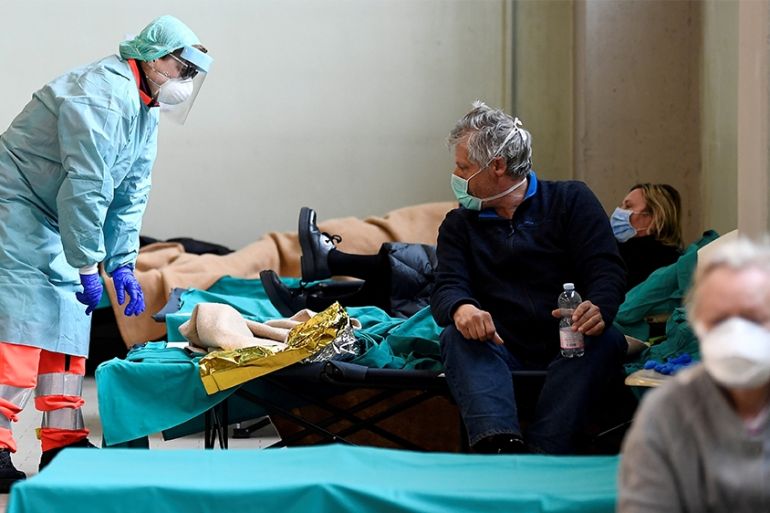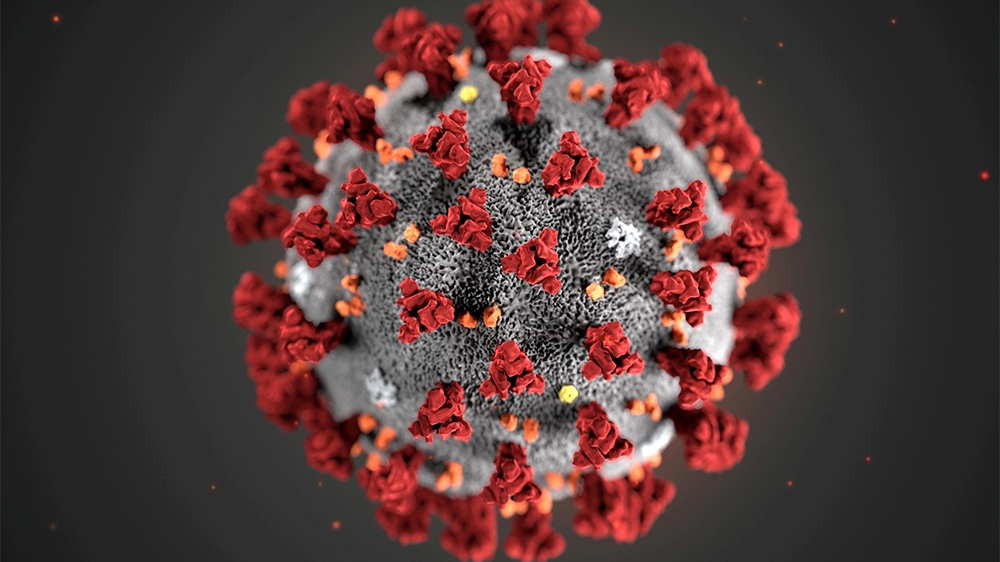Doctor’s Note: What does having the coronavirus feel like?
A doctor explains how COVID-19 attacks the body and why it can make us feel so awful.

When Dr Clare Gerada, a 60-year-old general practitioner (GP) and former chair of the Royal College of GPs in the UK, recently caught coronavirus, she said it was “the worst I have ever felt” and “worse than childbirth”.
She tested positive for COVID-19 and wrote about her experience of the illness online.
Keep reading
list of 4 itemsDoctor’s Note: How to look after your mental health
Doctor’s Note: How to do social distancing during coronavirus
Doctor’s Note: Coronavirus and those with weakened immune systems
Thankfully Dr Gerada is making a full recovery but hearing first-hand what it is like to have the illness got me thinking about how the virus attacks the body and why it makes us feel so bad.
Why do we get a fever and cough? Where does the sore throat come from and why do some people suffer from diarrhoea? To understand this, we need to understand how the virus takes control of our bodies.
COVID-19 is like all other viruses in that it needs a host – in this case the human body – to help it to reproduce and spread. A virus is basically a piece of genetic material that cannot do much on its own. It has to invade the body of a living creature in order to reproduce – without this it will die.
A virus is not the same as a bacteria, in that it does not need to eat, drink, excrete waste or rest. It has only one job and that is to reproduce by duplicating itself, but it can only do that once it has found a suitable host.
COVID-19 is not the only type of coronavirus there is. Other types of coronavirus include the Middle East respiratory syndrome coronavirus (MERS-CoV) and severe acute respiratory syndrome coronavirus (SARS-CoV).
All types of coronavirus can be transmitted from animals to people – a characteristic known as being zoonotic. COVID-19 is thought to have originated in a wildlife market in China.
The COVID-19 virus is spherical in shape with a crown or “corona” of club-shaped spikes on its surface, hence its name.
As with all viruses, the COVID-19 coronavirus’s main route of transmission is through droplets. Infected people cough or sneeze these droplets out; they are loaded with viruses and other people either breathe them in or touch a surface on which the droplet has landed, then touch their face and breathe it in and, voila, they have contracted it.

The journey of a coronavirus
Once you have breathed it in, the virus quickly travels to the back of your throat and nose.
The lining of the nose and throat is called the mucosa and this is what those club-shaped spikes attach themselves to before they start getting to work.
When it reaches the back of your nose, the COVID-19 virus will take over your nasal passageway cells. It will get inside them and re-programme them to stop doing whatever job they were doing and focus only on making more COVID-19 viruses.
Once that cell has produced more viruses than it can hold, the viruses will burst out and attach themselves to neighbouring cells, using them in turn as a platform on which to reproduce and the cycle repeats itself.
This destruction of cells in your nose and throat leads to the dry cough and sore throat. The pain you feel is a sign that your cells are in distress and are being destroyed.
Next comes the fever.
By this time, your immune system has realised there is a foreign body inside you. It has taken until now for this to happen because when a new foreign body enters the body, it takes time for your immune system to recognise it and start the immune response. However, when it does, memory cells are also produced which means if the virus tries again in future, your immune system will respond much quicker.
Chemicals called pyrogens are released by the immune system. These instruct your brain to raise your temperature – giving you a high fever of 37.8 Celcius or higher.
The fever helps the body trigger other parts of your immune system to start working and also creates an unfavourable or hostile environment for the virus. There is an argument that fevers actually help fight infection but because they tend to make us feel unwell, we try to bring them down.
The reason that people are reporting feeling so bad with this virus is the rate at which this particular one duplicates itself and its aggressive ability to invade the body.
Thankfully, the fever, cough and possible sore throat are where the symptoms will end for most people. Within five to seven days your immune system will have responded enough to now be able to destroy the virus and you will recover.
|
|
When complications occur
There are, however, some people whose immune systems will not be able to respond as quickly and the virus will continue to spread after this stage. These are people who are immunocompromised or have underlying health conditions.
As the virus duplicates and infects more cells in these people’s bodies, it works its way down the airways towards the lungs. Here it invades the cells in the lungs, making it hard for the lungs to do their job of taking in oxygen and removing carbon dioxide. Therefore, your lungs end up working harder and you will feel short of breath.
This is why coronavirus is associated with breathing difficulties – because the cells responsible for our breathing functions are impaired.
People feel their chest tightening; they are unable to get out of bed as the body needs to conserve energy and general aches and pains take hold as the body diverts all energy resources to fighting the infection.
As the COVID-19 virus attacks more and more parts of the lungs, they become inflamed and can start to fill with fluid and pus – you then have pneumonia.
If the lungs swell further and fill with more fluid, the patient may need a ventilator and, sadly, there is a risk of death if the lungs give up altogether.
Some people have reported diarrhoea as one of their symptoms and that is because the Covid-19 virus may be able to get from your nasal passageways and travel as far as your gut, causing problems there too. Even people with mild symptoms may experience diarrhoea.
This means there is a slight risk of passing the virus on through faeces, something that is being urgently investigated by medical professionals right now.
The situation is evolving all the time and we are learning new things about this virus every day. However, it is important to stress that most people will recover with mild to moderate symptoms and will build an immunity to COVID-19.